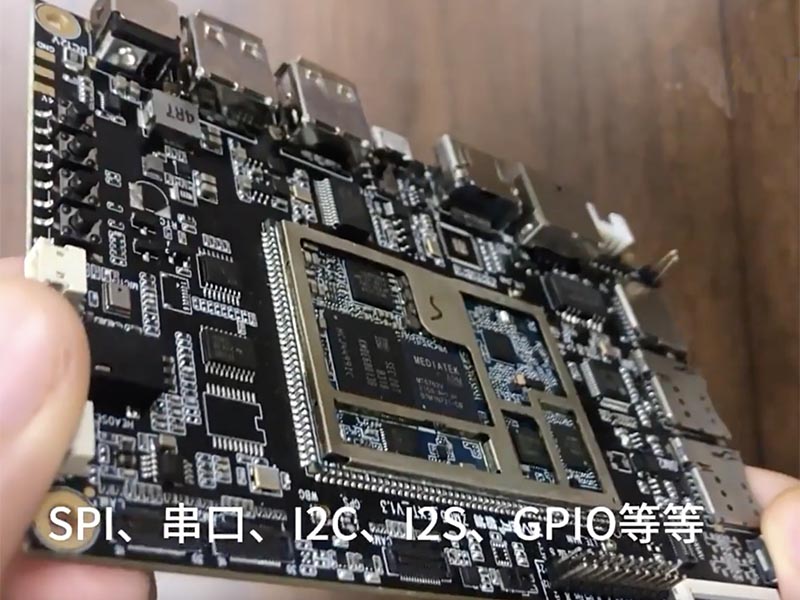What Is an Android SBC?
Android SBCs combine ARM SoCs, multimedia acceleration, and wireless connectivity to power smart devices, industrial HMI systems, and IoT applications. Explore architecture, display options, and key advantages of Android-based embedded systems.

In today’s world of smart devices, edge computing, and the Internet of Things (IoT), Android SBCs (Single Board Computers) are becoming a go-to choice for developers building interactive and connected products. From smart home control panels to industrial HMIs, these compact yet powerful boards offer the performance and flexibility needed to develop modern embedded solutions.
But what exactly is an Android SBC, and why is it quickly gaining traction across industries? This article explores what makes Android SBCs unique, what’s inside them, and how they are used in real-world projects.
🧠 Understanding Android SBCs
An Android Based Embedded Board is a complete single-board computer that runs the Android operating system. Unlike traditional development boards or basic microcontrollers, Android SBCs combine:
- A powerful processor (SoC)
- Built-in display support (touch and non-touch)
- Integrated wireless connectivity
- Multiple I/O interfaces for sensors and industrial devices
- Multimedia acceleration for video, audio, and graphics
Because Android SBCs can handle advanced user interfaces, multimedia, and wireless communication out of the box, they are ideal for building interactive embedded systems such as:
- Smart control panels
- Intelligent home hubs
- Digital signage and kiosks
- Medical device interfaces
- Automotive infotainment systems
Compared to microcontrollers or bare-metal systems, Android SBCs significantly reduce development time for projects that require rich graphical interfaces and connectivity.
🏗️ What’s Inside an Android SBC?
While specifications vary across different manufacturers, most Android SBCs share a similar internal architecture.
1. Processor (SoC)
The System-on-Chip (SoC) is the brain of the SBC. Popular SoCs for Android SBCs include:
- Rockchip – Excellent multimedia performance and cost efficiency (e.g., RK3566, RK3588, PX30)
- Allwinner – Affordable and reliable for smart displays and kiosks
- Qualcomm – High-end options with 4G/5G connectivity
2. Memory and Storage
- RAM: 1GB to 8GB depending on application requirements
- Storage: eMMC flash or microSD; some models support NVMe SSD expansion
3. Android OS
Most boards ship with Android 10–13, customized with a Board Support Package (BSP) that enables hardware acceleration, drivers, and device-specific optimizations.
4. I/O Ports and Expansion
- Video Outputs – HDMI, LVDS, MIPI-DSI, eDP
- USB Ports – For cameras, peripherals, or Wi-Fi adapters
- Serial Interfaces – UART, SPI, I²C for sensors and control
- Networking – Gigabit Ethernet, Wi-Fi, Bluetooth
5. Multimedia Support
A key strength of Android SBCs is hardware-accelerated multimedia:
- Smooth 1080p or 4K video playback
- High-quality audio output
- GPU acceleration for UI animations and 3D rendering
🔍 Why Choose Android for Embedded Systems?
While Linux SBCs remain popular in embedded systems, Android offers distinct advantages:
- Rich UI Framework: Easily create responsive, touch-friendly interfaces using Android SDK.
- Large Developer Ecosystem: Millions of developers familiar with Android reduce ramp-up time.
- App Compatibility: Integrate Android apps or custom APKs directly into your product.
- Multimedia Power: Native video, audio, and camera processing support.
- Rapid Prototyping: Pre-built BSPs and drivers shorten time-to-market.
📌 Key Use Cases for Android SBCs
1. Smart Home Control Panels
Android SBCs are increasingly used in 86-type wall-mounted panels for smart home control. They manage lighting, HVAC, security cameras, and IoT hubs — supporting touch-based GUIs, voice assistants, and protocols like MQTT and Zigbee.
2. Medical Devices
Modern medical equipment relies on clear, responsive interfaces. Android SBCs power diagnostic tools, portable ultrasound scanners, and monitoring devices — combining touch UI with real-time data connectivity.
3. Retail & Interactive Kiosks
Android SBCs enable self-service kiosks, vending systems, and interactive retail displays. They handle barcode scanning, payments, and customer engagement efficiently.
4. Industrial HMI Systems
In manufacturing, Android SBCs serve as human-machine interfaces (HMIs) for robotics, factory dashboards, and PLC monitoring — taking advantage of Android’s graphical and remote management capabilities.
5. Automotive Infotainment
Android SBCs drive in-vehicle entertainment and navigation systems with high-resolution displays, real-time connectivity, and user-friendly UI.
🖥️ Display Options for Android SBCs
Display integration is one of the biggest strengths of Android SBCs. Depending on the project, you can choose:
- HDMI – For monitors or TVs
- LVDS – Ideal for industrial panels with long cables
- MIPI DSI – For compact, high-resolution touch displays
- eDP – For ultra-HD or wide-view panels
If your product requires a specific display, android based embedded android board can match display interface and resolution precisely.
⚙️ Development Workflow
- Select the right SBC based on SoC, RAM, and I/O requirements.
- Set up the BSP and drivers for your board.
- Develop the application/UI using Android Studio.
- Integrate peripherals (displays, sensors, cameras).
- Optimize and test for stability and performance.
- Validate thermal, EMC, and reliability performance before production.
🆚 Android SBC vs. Linux SBC
Although both use ARM-based hardware, the platform choice depends on product goals:
| Feature | Android SBC | Linux SBC |
|---|---|---|
| User Interface | Best for touch and multimedia | Best for headless/industrial control |
| Customization | High-level app customization | Low-level driver flexibility |
| Ecosystem | Mobile app integration | Strong open-source tools |
| Use Case | Consumer & HMI devices | Industrial & automation systems |
✅ Conclusion
Android SBCs are more than small computers — they’re complete development platforms for building intelligent and connected devices. With powerful SoCs, multimedia acceleration, and Android’s robust ecosystem, they enable rapid prototyping and scalable production.
Whether you are creating a smart home panel, industrial HMI, or medical display interface, Android SBCs deliver the ideal balance between performance, flexibility, and cost efficiency.
By understanding their architecture and choosing the right SoC platform, developers can accelerate design cycles and bring reliable embedded products to market faster.